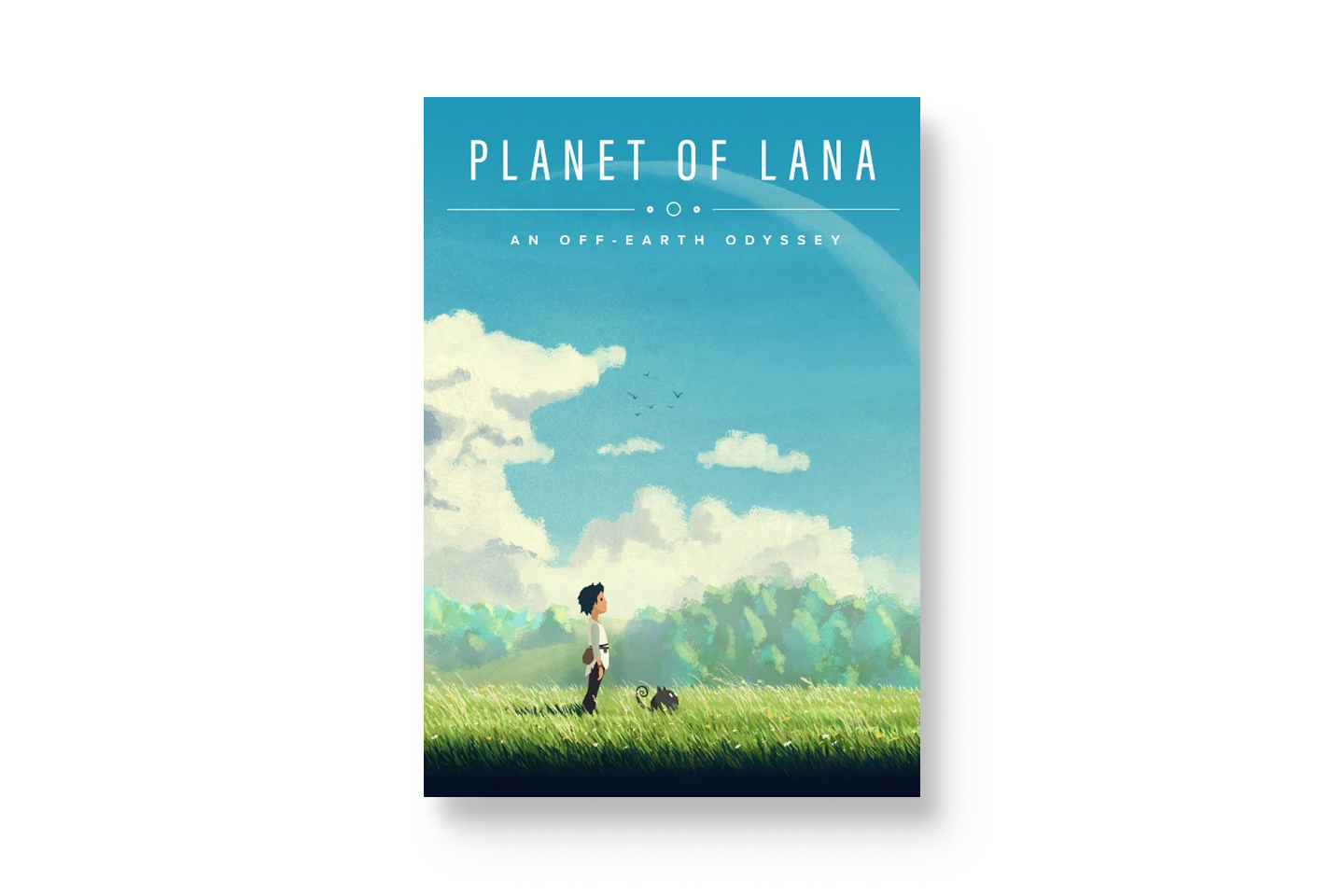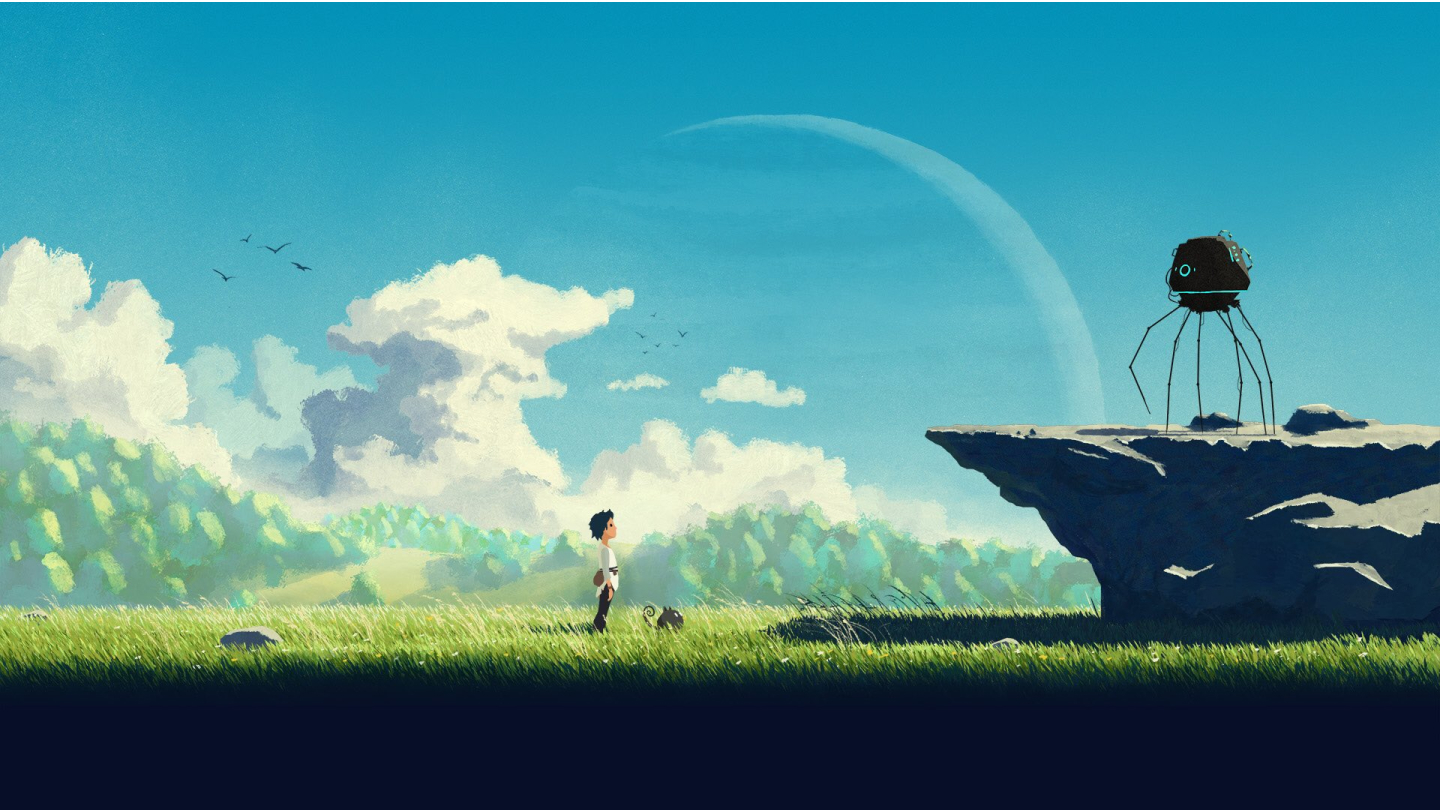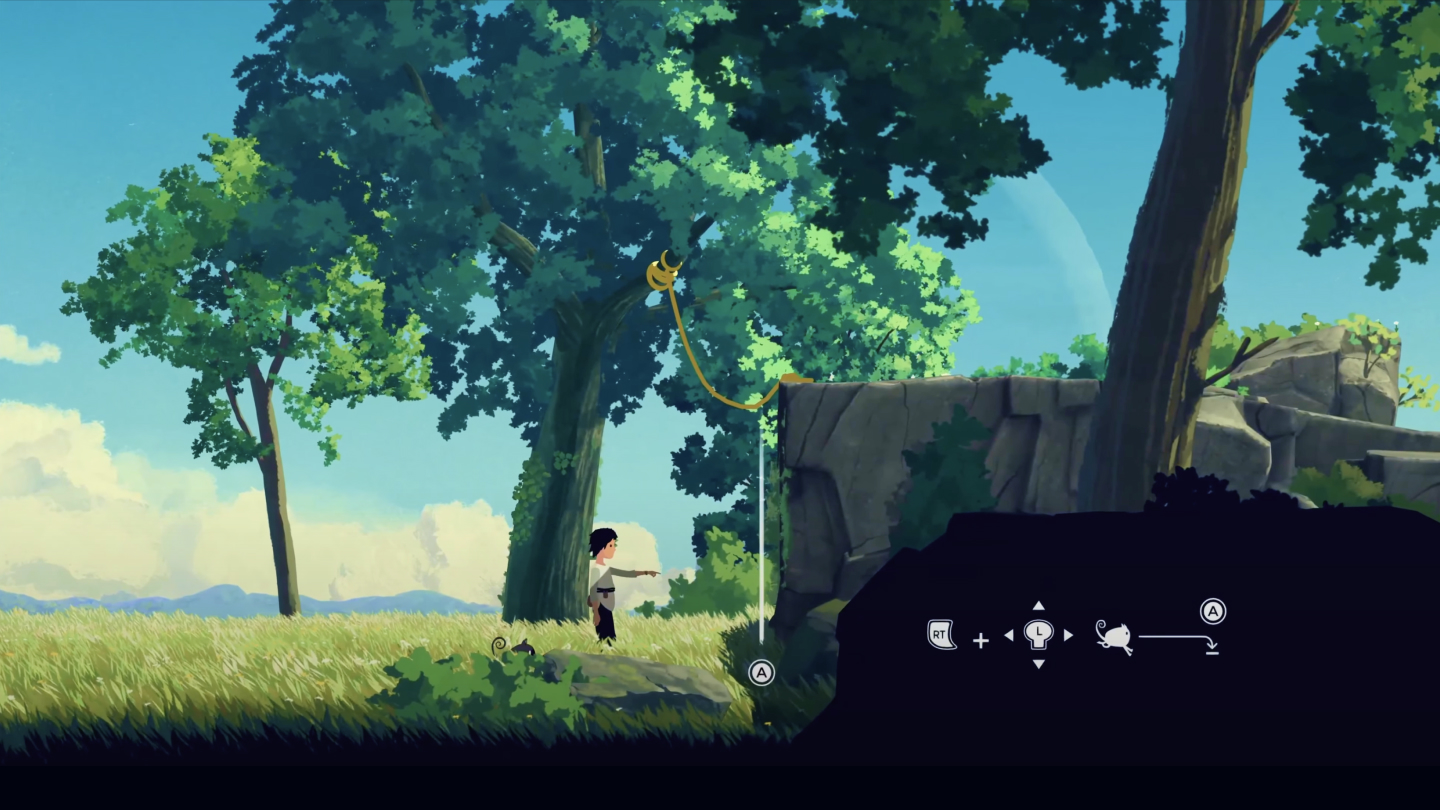
Planet of Lana: where gameplay meets cinematic brilliance
4 min read May 16, 2024

Story
The game starts with the protagonist, an 11-year-old girl named Lana, walking through a village. This scene functions as a tutorial, introducing basic controls. Soon, robots arrive and abduct Lana’s sister and neighbors, setting off the central conflict in the story.
Lana is soon joined by a creature named Mui. You can then control both Lana and Mui, leading to some creative puzzles that will test your reasoning abilities.
As the game progresses, we go from one environment to another, learning more about the world through visual and auditory clues. Though, since there is no dialogue, narration, or subtitles in the game, we have to piece together the backstory ourselves.
The stunning combination of artwork, orchestral soundtrack, sound effects, and haptic feedback keeps the story flowing.
Art & sound
The game is a side-scroller that is a treat for the eyes and ears. In fact, it all started with the image below. Game designer Adam Stjärnljus drew and then later developed into the game.

Painterly environments feel like they are right out of an animated movie. A parallax effect layers environmental features behind and in front of Lana and Mui, contributing to the deep immersion in Lana’s world.
The characters aren’t too detailed, keeping the focus on the story and the world instead of on the main character as in most RPGs. Motion is fluid, with subtle ragdoll physics that make Lana and other living characters truly feel alive. The robots are elegantly designed, with movement and sounds that give them a sinister feeling.
The soundtrack by Takeshi Furukawa is a masterpiece — on par with any fantasy or science fiction film. The different tracks seamlessly match the visual environments, which in this game span everything from serene plains to dark, terrifying factories.
The music doesn’t just help to set the scene, but also quotes the patterns of tones core to the gameplay. Like any great film soundtrack, Leitmotif is employed to subtly bolster the presence of characters and reoccurring emotions.
The craftsmanship applied to the aesthetics — both visible and auditory — produces a sense of place. Each scene feels standalone and imbues the player with a different feeling. Yet, they all feel cohesive.
My favorite sections were the cinematic scenes where black bars appeared from above and below to constrain the view to a cinematic aspect ratio. That cinematic feel combined with singer Siobhan Wilson’s powerful, yet delicate vocals, brought me to tears on several occasions.
Beyond the soundtrack, I loved the choice to avoid speech and narration. This made me feel the game in my heart instead of always thinking about it with my brain. Lana does speak in her native language throughout the game. I was able to piece together bits of the language, including the name of her companion, Mui.
Gameplay
The puzzles aren’t too difficult, which for this game is a big plus. They keep the story going while still providing the player with a sense of accomplishment. The game often hints at which button to press, which again keeps the story moving.

Some puzzles do occasionally pose a bigger challenge than others, requiring either precise timing or writing down and deciphering clues.
Every scene feels atomic and self-contained, meaning that this game is easy to play in several sessions instead of a single sitting like Journey. I played it 15 to 30 minutes at a time before going to sleep.
In short
Overall, this is a game that, from the start, begged me to delve in emotionally and feel what Lana is feeling. It takes only four to five hours to finish, it doesn’t require much more time than an epic movie.
Actually, given the focus on the world and story, I’d rather call this an interactive movie rather than a cinematic game.
Thanks to Q for reading drafts of this.
